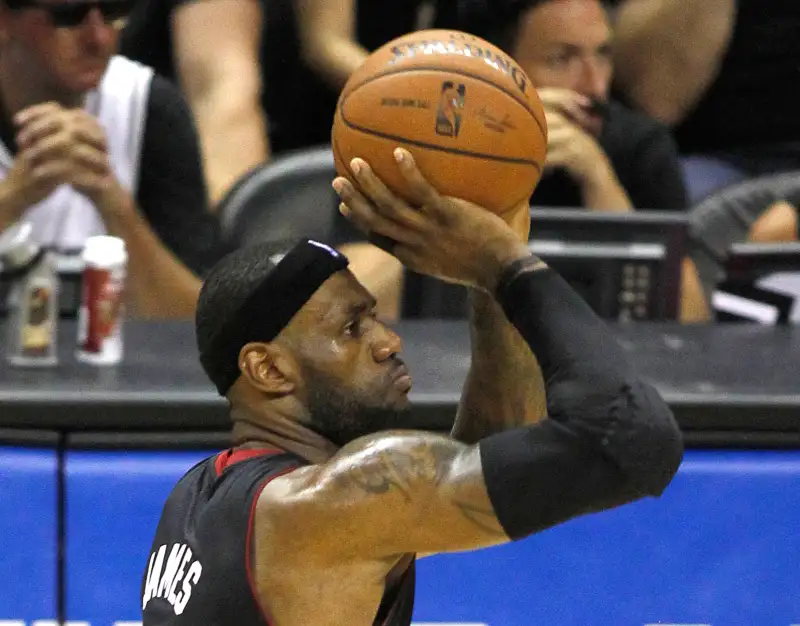Why You Shouldn't Overplay a Hot Hand — in Basketball or Investing
Money is not a client of any investment adviser featured on this page. The information provided on this page is for educational purposes only and is not intended as investment advice. Money does not offer advisory services.

A couple of winters ago, Larry Summers gave a 30-minute talk to the Harvard’s men's basketball team over pizza. During the peroration, per Adam Davidson in the New York Times, the former Treasury Secretary and Harvard president engaged in a bit of Socratic dialogue.
He asked the students if they thought a player could have a “hot hand” and go on a streak in which he made shot after shot after shot? All the players nodded uniformly. Summers paused, relishing the moment.
“The answer is no,” he said. “People apply patterns to random data.”
In this case, Summers may be wrong.
A new study by three Harvard grads — using data based on tracking cameras in 15 arenas that captured 83,000 shot attempts in the 2012-13 NBA season — found that “players who are outperforming (i.e. are ‘hot’) are more likely to make their next shot if we control for the difficulty of that shot.”
When you account for the difficulty of the shot, the authors discovered “a small yet significant hot hand effect.” To put a number on it, a player’s chance of making his next shot increases by 1.2% for each prior shot he made.
So what?
While your basketball skills may never carry you to the NBA, there is a lesson to be learned from the paper’s findings.
And it has to do with how you invest.
The study's authors concluded the following: “Players who perceive themselves to be hot based on previous shot outcomes shoot from significantly further away, face tighter defense, are more likely to take their team’s subsequent shot, and take more difficult shots."
This basically means when someone makes certain shots (think three-pointers) at a higher percentage than they normally do, the opposing defense reacts by guarding the player more closely. And as defenders start paying more attention to the shooter, he has to take shots from longer range, which are inherently more difficult.
What does this have to do with your portfolio?
Well, consider what’s going on. A player makes a few shots and gets “hot.” He’s in the zone, so he starts growing overconfident. Not only does he start to take more shots, but he starts taking increasingly difficult shots.
While he may be more likely to make those difficult shots at the outset since he’s on a roll, the more difficult shots come with a lower percentage of accuracy. Which means he will eventually start to miss more and cool down. In other words, his overconfidence leads him to take shots that eventually take him “out of the zone.”
This is a lot like momentum investing.
Momentum is a real force in the markets. History, for instance, shows that investors — at least in the short run — are much better off riding last year's winners than the laggards, says Sam Stovall, managing director for U.S. equity strategy at S&P Capital IQ.
So investors who ride the market's momentum invest in a winning stock or sector. Those investments rise in value. This trend repeats a few times and before long investors believe their skills as a trader are leading to the gains, rather than the momentum effect. Before long, these investors are trading more frequently to capitalize on their "hot hands." But this has the effect of racking up trading costs and mistakes, which are a headwind to investors that eventually cools them down.
This doesn’t mean you should eschew momentum altogether. As Money's Paul Lim noted in his March 2014 article, “A decent body of research suggests that entire asset classes that shine in one year have a better-than-average chance of outperforming in the next.”
The trick is to find a way to ride the hot hand without taking increasingly inefficient shots.
One idea is to minimize your trading costs by limiting your trading to just once a year. According to researchers at the asset-management firm Leuthold Group, a time-tested way to do this is to buy last year’s second-best performing asset class and hold that for a year (last year's second-best asset class was large, U.S. stocks). Then repeat the process the following year. Historically, such a strategy returned five points more annually than the S&P 500, while experiencing only slightly more volatility. (Of course, you shouldn’t tilt your entire portfolio toward momentum sectors. Think 10%.)
By incorporating a little bit of the “hot hand” into your investing strategy, you should be able to book slightly higher returns. And you don’t even have to go to the gym.
